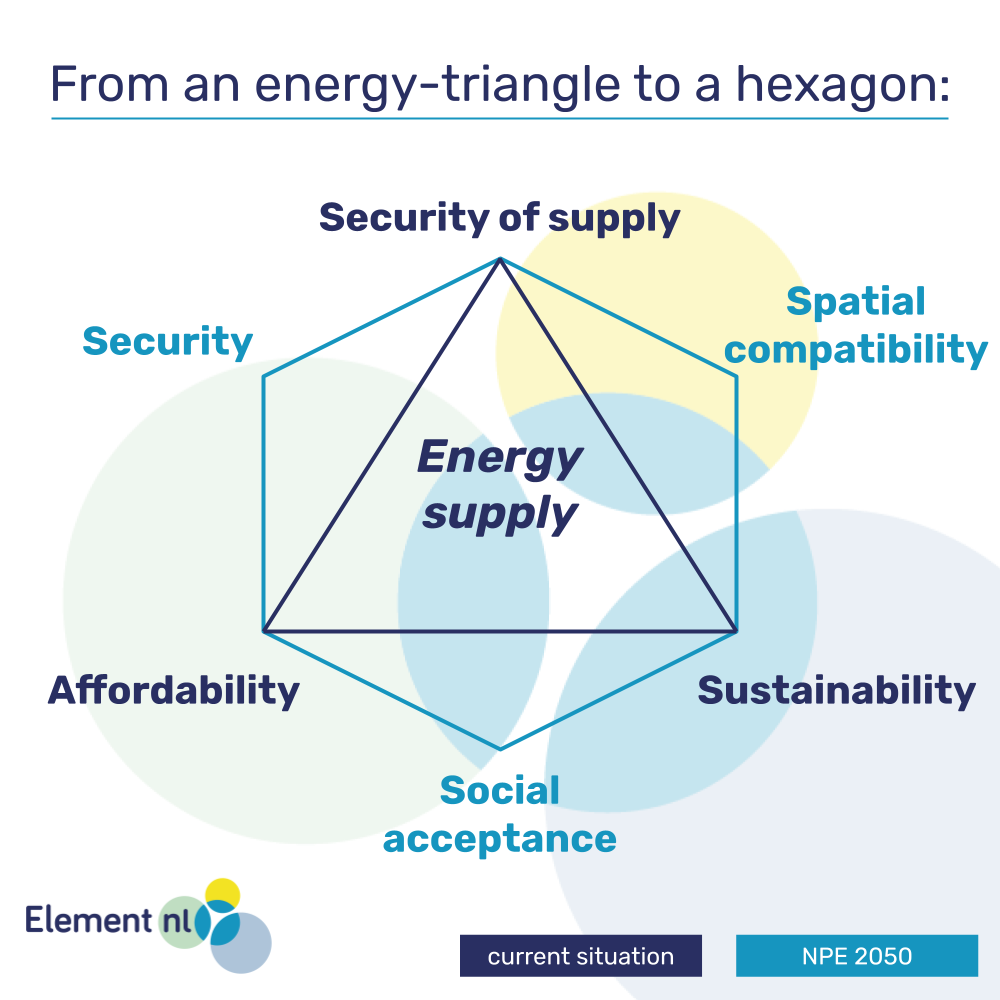The Dutch government is currently working on the National Plan Energy System (NPE). This program will guide what the Dutch energy system should look like in 2050 to become climate-neutral. The energy system of the future will be completely different in many ways, including how energy is generated, used, transported, and stored. Naturally, the oil and gas-producing sector plays an important role in achieving this. The development of the NPE is currently underway, and Element NL is providing input. Here are the most important details for the sector.
What has happened so far?
In June 2022, the first ideas were outlined in a letter. An independent expert team was then established to create an outlook: 'the Outlook Energy System 2050'. There is also a working group that supports this process, consisting of individuals from the Netherlands Enterprise Agency (RVO), TNO, and Energy Management Netherlands (EBN).
Other organizations and citizens are currently involved, including during workshops earlier this month in which Element NL participated.
The five key insights for the gas sector
Initial findings and insights emerged during the workshops. Here are the five most relevant for the gas sector:
1. The North Sea is becoming the most important place for energy generation
The North Sea will become even more important in the Dutch energy system for generating, processing, and transporting energy. The integration of different systems and infrastructures is essential to do so efficiently. TNO is already researching how system integration can take shape in the North Sea Energy program. The challenge, however, is spatial planning.
2. Spatial planning will soon become much more important
Most of the conclusions in the (interim) report indicate how scarce actual space is in the Netherlands to achieve a new energy system. Generating and transporting renewable energy competes with nature, housing, and transport. This is already clear in the North Sea, where wind farms, shipping routes, and gas infrastructure combine, creating challenges for spatial planning and safety. Smart planning and thinking are needed right now.
3. The Netherlands (for now) has an energy-intensive industry
Compared to other (European) countries, the Netherlands has a relatively energy-intensive industry, making the transition and energy saving more complicated. The relatively large agriculture and livestock sector is also currently responsible for a significant share of emissions. The chemical sector consumes a lot of raw fossil materials. Additionally, the Netherlands plays a central role in the production of bunker fuels for shipping and aviation. These factors currently contribute significantly to the economy, partly due to the favorable gas sector infrastructure. Significant changes must occur to ensure that this energy demand is appropriate for climate goals.
See also: the four future visions of the Netherlands Environmental Assessment Agency (PBL).
4. The energy triangle becomes a hexagon
For many, the energy triangle is familiar, with affordability, security of supply, and sustainability of energy keeping each other in balance. In the energy system of the future, this becomes more complex and the triangle becomes a hexagon. Safety, spatial compatibility, and social acceptance are added to it. All of this relates to scarcity and shows how complex the energy issue is and how it may become more complicated. Making difficult choices will be necessary.

5. Natural gas will fall under the category of "carbon carriers".
The NPE will work on developing four energy chains: electricity, hydrogen, carbon, and heat. It is worth noting that the term "fossil" is no longer used, but natural gas extraction will still have a place under the category of "carbon", sometimes referred to as "carbon carriers". Carbon capture and storage (CCS) and negative emissions should be used to offset emissions and achieve climate neutrality (with net zero emissions).
How does Element NL view these plans?
The energy system in 2050 will be completely different and must be so. Much work needs to be done to achieve this goal, but both now and in the future, there will be opportunities for oil and gas-producing companies. The plans in the NPE align with the natural gas sector's future outlook, as outlined in our Action Agenda, which includes natural gas as a transition fuel, feedstock for industry, and infrastructure for efficient production, transportation, and storage of hydrogen, among other things.
There is already a clear role for CO2 capture and storage (CCS) in the coming years, in which the sector currently plays a significant role and is ready to take the next step. However, there are also concerns, especially regarding the dilemma of spatial planning in the North Sea. Element NL, therefore, supports the conclusion that a clear and predictable long-term policy framework is necessary.
We also emphasize the importance of cooperation, which we actively seek, but which must also be facilitated by the government.
What does the follow-up entail?
The plan is to publish the final NPE by the end of 2024. From Q2 2023, the draft's impact will be tested, and public consultation will take place after the draft is finalized.
Currently, it is still possible to provide input through the National Climate Consultation. Besides interest groups and other governments, any Dutch person can give his or her opinion. To do so, please visit the National Climate Consultation.
Element NL is closely monitoring the progress, providing input, and staying involved.






